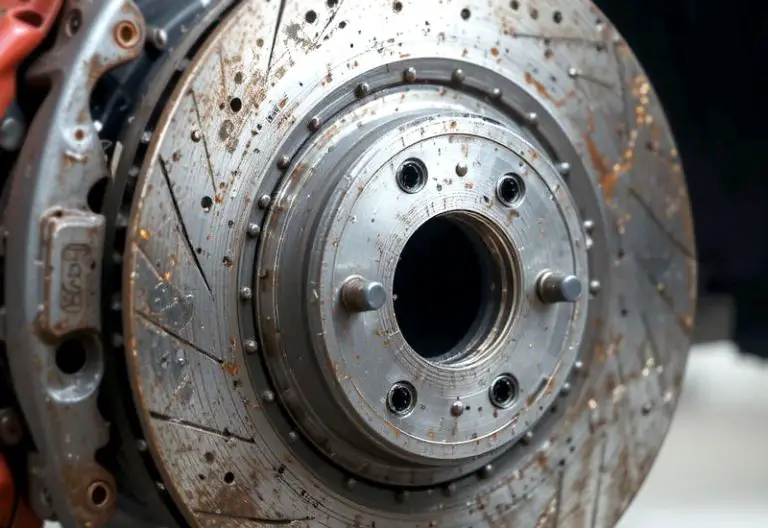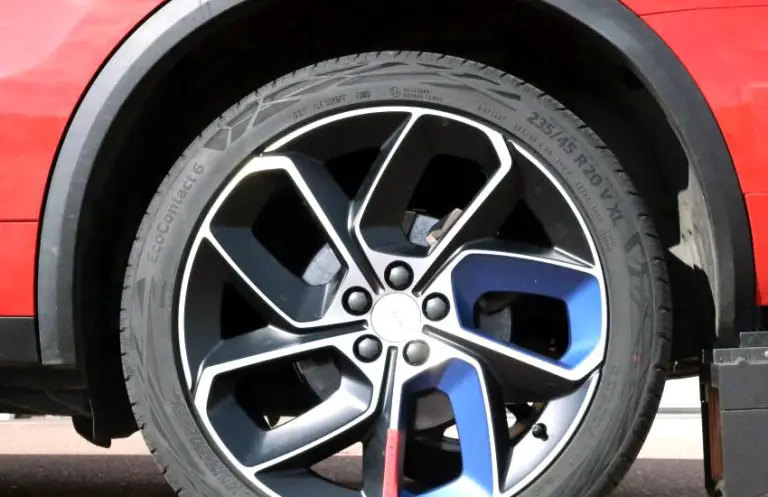Yes, it is possible to stop in any gear. When stopping in a manual transmission vehicle, the driver can downshift to lower gears sequentially until coming to a complete stop.
This allows the vehicle to be ready to accelerate again without having to shift down from a higher gear. However, in an automatic transmission vehicle, the transmission control unit will handle downshifting when coming to a stop. Nonetheless, it’s important to remember that stopping in a lower gear can help maintain better control and prevent wear on the brakes.
Understanding the proper use of gears when coming to a stop can enhance driving efficiency and safety.

Credit: www.ebay.com
Understanding How Gears Work
Gears in a vehicle are crucial for transferring power from the engine to the wheels efficiently.
They work by adjusting the speed and torque, allowing the vehicle to adapt to various road conditions.
How Gears Affect Speed And Power
Gears control how fast a vehicle moves and the amount of force or power it can generate.
Lower gears provide more power but lower speed, while higher gears increase speed with reduced power.
The Purpose Of Changing Gears
Changing gears is essential to match the vehicle’s speed and the engine’s RPM for optimal performance.
It helps in maximizing fuel efficiency, engine lifespan, and overall driving experience.
Debunking The Myth: Stopping In Any Gear
When driving, safe practices are paramount, and one prevailing myth is the idea of stopping in any gear. Let’s delve deeper into the truth behind this common misconception.
Exploring The Limitations Of Each Gear
At the core of vehicle mechanics lies the fact that each gear serves a specific purpose. Attempting to stop in a high gear can strain the engine and compromise safety.
First gear, for instance, provides maximum power but minimal speed, ideal for starting from a standstill. Higher gears, on the other hand, are optimized for cruising at faster speeds. Trying to come to a full stop in anything beyond first gear can put undue stress on the engine.
Why It Is Unsafe To Stop In Higher Gears
Stopping in higher gears can lead to stalling or engine damage. The transmission may struggle to downshift quickly enough, causing a jerky stop that risks control.
Engaging the appropriate gear for your speed ensures a smooth and safe stop. Being mindful of these limitations can help prevent potential accidents on the road.
Proper Gear Selection For Stopping
Selecting the right gear for stopping your vehicle is crucial to ensure a safe and smooth halt. While it’s possible to stop in any gear, it’s best practice to downshift to lower gears for more control and braking power. Proper gear selection plays a vital role in maintaining vehicle safety and stability during braking.
When it comes to stopping a vehicle, proper gear selection is crucial for maintaining control and ensuring a safe and smooth stop. Matching the appropriate gear to your speed and road conditions, utilizing effective downshifting techniques, and braking in the correct gear will help you achieve optimum performance. Let’s dive into these aspects in more detail.Matching Gear To Speed And Road Conditions
To stop safely and efficiently, it’s essential to match the gear you are in with your vehicle’s speed and the road conditions you are encountering. This proactive approach helps prevent skidding, provides better traction, and minimizes wear on your vehicle’s braking system. Considering the gear-to-speed matching, ensure that you shift to a lower gear as you decrease your speed. This allows the engine to slow down your vehicle gradually, without solely relying on the brakes. By downshifting, you are effectively utilizing engine braking, which increases control and reduces the wear on the brake pads and rotors. When it comes to road conditions, adjusting your gear accordingly can greatly enhance your stopping ability. If you’re on a slippery surface, such as wet or icy roads, it’s advisable to downshift to a lower gear. This will engage the engine braking and increase traction, helping you maintain control while stopping.Downshifting Techniques
To downshift effectively, follow these steps: 1. First, release the accelerator pedal while maintaining a steady speed. 2. Next, depress the clutch pedal fully to disengage the engine from the wheels. 3. While the clutch is engaged, shift from your current gear to the lower gear, gradually releasing the clutch pedal as you increase the engine RPM. 4. Finally, when the engine RPM matches the desired speed, release the clutch pedal completely. By smoothly executing these downshifting techniques, you can seamlessly transition to a lower gear, allowing for better engine braking and control during the deceleration process.Braking In The Correct Gear
Braking in the correct gear plays a vital role in stopping efficiently and safely. When approaching a stop, ensure that you are in an appropriate gear that allows the engine to assist in the braking effort. This helps prevent excessive reliance on the brakes, reducing the risk of overheating and wear. For example, if you are traveling at higher speeds, downshift to a lower gear before applying the brakes. By doing this, you are utilizing the engine’s braking power, allowing for a smoother and more controlled deceleration. When you come to a complete stop, remember to shift into neutral or the appropriate gear for idling, depending on your vehicle. In conclusion, proper gear selection for stopping is crucial for maintaining control, ensuring a safe stop, and optimizing vehicle performance. By matching the gear to your speed and road conditions, utilizing effective downshifting techniques, and braking in the correct gear, you enhance your ability to stop efficiently and safely. Remember to always maintain awareness of your surroundings and adjust your gear selection accordingly to adapt to different driving situations.Mastering The Art Of Downshifting
Mastering the art of downshifting is an essential skill for any driver who wants to maintain control and prolong the life of their vehicle. Whether you’re navigating a winding mountain road or approaching a steep descent, understanding how to downshift properly can make the difference between a smooth, controlled maneuver and a stressful, jarring experience.
Understanding Engine Braking
Engine braking, also known as compression braking, is a technique that utilizes the resistance of the engine to slow down a vehicle instead of relying solely on the brakes. When downshifting, the lower gear engages the engine, causing it to slow down the vehicle as it resists the momentum. This reduces wear on the brakes and can prevent brake overheating during long descents.
Rev-matching Techniques
Rev-matching is the art of synchronizing the engine speed with the transmission speed during the downshift. By blipping the throttle while shifting to a lower gear, you can ensure a seamless transition and prevent any jerking or lurching, maintaining a smoother driving experience. This technique minimizes wear and tear on the transmission, promoting longevity.
Smoothly Transitioning To Lower Gears
Smoothly transitioning to lower gears involves a combination of technique and timing. When approaching a lower gear, you should apply progressive pressure on the clutch and gently give a tap on the accelerator to rev-match before engaging the new gear. This approach ensures a seamless transition and minimizes stress on the drivetrain.
Benefits Of Stopping In Lower Gears
The benefits of stopping in lower gears can provide numerous advantages in terms of vehicle performance and safety. By choosing to stop in a lower gear, drivers can experience improved control and responsiveness, reduce strain on the braking system, and enhance safety on steep descents. These benefits make stopping in lower gears a valuable practice for drivers in various situations, maximizing the effectiveness of their vehicle’s performance and safety features.
Improved Control And Responsiveness
Stopping in lower gears allows drivers to maintain better control over their vehicles, especially when coming to a stop on slippery or challenging road surfaces. By selecting a lower gear for stopping, drivers can engage the engine’s braking power, effectively slowing the vehicle while maintaining control. This improves responsiveness and enhances the driver’s ability to navigate varied driving conditions, promoting a safer overall driving experience.
Less Strain On Braking System
When a vehicle is stopped in a lower gear, there is less reliance on the braking system to slow down the vehicle entirely. This reduces the strain on the brakes, preventing premature wear and tear and potential system failures. By distributing the stopping power between the engine and brakes, drivers can prolong the lifespan of their braking components and ensure their functionality remains optimal for longer periods, contributing to overall vehicle maintenance and safety.
Enhanced Safety On Steep Descents
Stopping in lower gears is particularly beneficial when descending steep inclines, as it provides an additional layer of safety. By utilizing engine braking in lower gears, drivers can control their speed more effectively, minimizing the risk of brake overheating or failure on extended downhill stretches. This proactive approach to managing speed on descents enhances overall safety and reduces the likelihood of accidents or loss of control, promoting greater peace of mind for drivers and passengers alike.
Common Mistakes To Avoid
When it comes to stopping in any gear, there are a few common mistakes that many drivers make. By being aware of these mistakes and avoiding them, you can improve your driving skills and ensure a smooth and safe stop. Let’s take a closer look at these mistakes:
Downshifting Too Late Or Too Early
One of the most common mistakes drivers make is downshifting too late or too early. Downshifting refers to shifting to a lower gear to match the speed of the vehicle before coming to a stop. If you downshift too late, you may put unnecessary strain on the engine and brakes, leading to wear and tear. On the other hand, downshifting too early can cause the engine to rev too high, potentially causing a loss of control.
Neglecting To Downshift In Challenging Situations
Another mistake to avoid is neglecting to downshift in challenging situations. When facing steep descents or sharp turns, it’s crucial to downshift to a lower gear to maintain control of the vehicle. Neglecting to do so can put excessive strain on the brakes and increase the risk of losing control, especially on slippery or uneven surfaces.
In conclusion, stopping in any gear requires careful judgment and skill. By avoiding common mistakes like downshifting too late or too early and neglecting to downshift in challenging situations, you can ensure a smoother, safer, and more efficient stop.
Practicing And Refining Your Skills
Mastering the art of stopping in any gear requires dedication and practice. By honing your skills, you can achieve precision and control in your maneuvers. Here are some key strategies to enhance your abilities.
Finding An Ideal Practice Location
Locating the perfect spot to practice stopping in different gears is crucial. Look for a spacious and empty parking lot to ensure safety and minimize distractions.
Gradually Increasing Difficulty
- Start practicing in first gear and gradually move to higher gears as you feel more comfortable.
- Challenge yourself by introducing different obstacles or uneven terrain to refine your stopping skills in diverse conditions.
Seeking Professional Guidance
- Consider enrolling in a motorcycle training course where experts can provide personalized feedback and tips.
- Seeking guidance from experienced riders can offer valuable insights to help you improve your stopping techniques effectively.

Credit: www.realavid.com

Credit: vintageking.com
Conclusion
The ability to stop in any gear depends on the type of vehicle and its transmission system. Automatic vehicles allow for stopping in any gear, while manual vehicles require downshifting to a lower gear before coming to a complete stop.
It’s important to understand your vehicle’s capabilities and follow proper driving techniques for a smooth and safe stopping experience.


